Occupational Safety Training for Shock Absorber Manufacturing
99,000 ₫
Note: The above price is calculated per person and may vary depending on the number of trainees participating in the course and market fluctuations. For more accurate pricing information, please refer to the price list or contact our consultants directly.
Occupational safety is an important issue in factories producing shock absorbers and needs to be addressed promptly to ensure the health and safety of workers, as well as to enhance the reputation of businesses. The Occupational Safety Training course is an effective solution to raise awareness about accident prevention for workers involved in shock absorber production.
Table of Contents
Toggle1. Overview of Shock Absorbers
a. What is a Shock Absorber?
A shock absorber is an important device in the suspension system of vehicles, especially cars and motorcycles. Its main function is to absorb and reduce shocks and vibrations from the road surface or vehicle oscillations, helping improve stability, durability, and comfort during driving.
The basic structure of a shock absorber consists of two main components: inside is a seal or piston, and outside is the casing tube. When the vehicle moves, oil or compressed gas inside the shock absorber is forced through valves and holes via the piston. This process reduces the rebound force from impacts on the vehicle, thereby reducing vibrations and maintaining vehicle stability.
Shock absorbers can be adjusted to suit road conditions and vehicle load. Maintaining shock absorbers in good working condition is crucial to ensure safety and driving performance. Signs of damaged shock absorbers include oil leaks, strong vibrations when passing over rough roads, or vehicle imbalance during sudden braking.
In summary, a shock absorber is a key component of the vehicle suspension system, playing an important role in minimizing oscillations and enhancing comfort and safety when operating cars and motorcycles.

b. Types of Machinery Used in Shock Absorber Production
- Tube Cutting Machine: This machine is used to cut steel or aluminum tubes into sections suitable for shock absorber sizes. It may have automatic functions to ensure accuracy and high efficiency.
- Tube Bending Machine: This machine bends steel or aluminum tubes into various shapes and sizes required for shock absorbers. The bending process must ensure accuracy and tube durability.
- Shock Absorber Head Cap Pressing Machine: This machine presses the head caps of shock absorbers, including valves and other accessories installed on the head part.
- Precision CNC Machining Machine: CNC machines are used for precise machining of components such as pistons, valves, and other internal parts of shock absorbers, ensuring accuracy and durability of critical components.
- Automatic Welding Machine: Automatic welders weld shock absorber parts together, including welding tubes and head caps precisely to ensure structural strength.
- Testing and Inspection Machines: These devices check the quality and performance of shock absorbers after manufacturing. They typically measure, test durability, and evaluate shock absorber operation under various conditions.

c. Shock Absorber Manufacturers in Vietnam
There are many famous shock absorber manufacturers worldwide, with advanced quality and technology, meeting the demands of various vehicles. Below are some notable names in this industry:
- KYB Corporation: KYB is one of the largest shock absorber manufacturers globally, headquartered in Japan. They supply shock absorbers and suspension systems for many prestigious vehicle brands worldwide. KYB products are known for high durability and stable performance.
- Monroe: Monroe is a brand under Tenneco, a multinational American corporation. Monroe is famous for high-quality hydraulic and gas shock absorbers widely used in both cars and trucks.
- Bilstein: Bilstein is a German brand specializing in premium shock absorbers and suspension systems. Bilstein products are often used in sports and luxury vehicles due to advanced technology and superior performance.
- Showa Corporation: A leading Japanese shock absorber manufacturer supplying products to famous brands such as Honda, Suzuki, and Kawasaki. Showa is well-known for shock absorbers used in motorcycles and racing bikes.
- Öhlins: Öhlins is a Swedish brand specializing in high-end suspension systems, especially for motorcycles and racing vehicles. Öhlins products are highly regarded for performance and quality, frequently used in professional racing.
These brands not only supply high-quality shock absorbers for common vehicles but also develop specialized products for motorsports and other special applications.

d. Specific Jobs in the Shock Absorber Manufacturing Plant
Group 1
- CEO, Deputy CEO, Department Heads in the shock absorber manufacturing plant
Group 2
- Safety officers: manage safety in the factory, design safety procedures, supervise and enforce workers’ compliance with safe working processes.
Group 3
- Machining shock absorber parts from raw materials.
- Operating machining equipment such as lathes, milling machines, grinders.
- Inspecting and ensuring parts meet required dimensions and precision.
- Using tools and machinery to assemble products.
- Using measuring and inspection devices to ensure product quality standards.
Group 4
- Office work, service, sales, marketing.
- Production management, quality management, human resources management, material management, finance and accounting management.
- Research and development of new products, designing product packaging and samples.
2. Overview of Occupational Safety Training for Shock Absorber Production
In this article, we focus on issues related to Group 3, because Group 3 is the group directly involved in production, facing the highest occupational safety risks. For reference to other groups, see here.
a. What is Occupational Safety Training for Group 3?
- Occupational safety training for Group 3 consists of sessions that equip workers with awareness on how to prevent workplace accidents.
- The safety training course helps workers identify and avoid hazards, reducing the risk of occupational accidents during work.
REGISTER FOR OCCUPATIONAL SAFETY TRAINING SERVICE
b. Training Duration
Initial safety training duration
- The total training time must be at least 24 hours, including examination time.
- 8 hours of theory on policies and laws related to occupational safety and hygiene
- 8 hours of theory on basic knowledge about occupational safety and hygiene
- 4 hours of theory on specialized training content
- 2 hours of practical training on specialized content
- 2 hours of theoretical examination at the end of the training course
The safety training center will distribute the time across multiple sessions depending on the schedule for workers. Usually, there will be 6 training sessions over 3 days, provided the manufacturer can arrange continuous study time.
Periodic safety training duration
- Before the occupational safety card expires, workers who want to renew it must undergo a periodic occupational safety training course, with the training duration being at least 50% of the initial safety training duration.
Explanation: the total periodic occupational safety training duration must be at least 12 hours, including examination time. After completing the periodic training and passing the test, workers will be reissued and extended the occupational safety card.
c. Training Course Content
| No. | TRAINING CONTENT | TRAINING DURATION (HOURS) | |||
| Total | Including | ||||
| Theory | Practice | Exam | |||
| I | System of policies and laws on occupational safety and hygiene | 8 | 8 | 0 | 0 |
| 1 | Overview of the legal document system on occupational safety and hygiene. | 6 | 6 | ||
| 2 | System of standards and technical regulations on occupational safety and hygiene. | 1 | 1 | ||
| 3 | Specific regulations of state management agencies on occupational safety and hygiene in construction, expansion, or renovation of facilities for manufacturing, usage, storage, and inspection of machinery, equipment, materials, and substances requiring strict occupational safety and hygiene control. | 1 | 1 | ||
| II | Basic knowledge of occupational safety and hygiene | 8 | 8 | 0 | 0 |
| 1 | Basic knowledge of hazardous and harmful factors in the workplace. | 4 | 4 | ||
| 2 | Methods to improve working conditions. | 1 | 1 | ||
| 3 | Safety culture in production and business. | 1 | 1 | ||
| 4 | Rights and obligations of employers and employees; policies and regimes on occupational safety and hygiene for workers; functions and duties of safety and hygiene networks. | 1 | 1 | ||
| 5 | Occupational safety rules, signs, and instructions; use of safety equipment and personal protective equipment; first aid skills for occupational accidents and occupational disease prevention. | 1 | 1 | ||
| III | Specialized training content | 6 | 4 | 2 | 0 |
| Comprehensive knowledge about machines, equipment, substances generating hazardous and harmful factors; risk analysis, evaluation, and management of occupational safety and hygiene; safe working procedures with machines, equipment, and substances requiring strict occupational safety and hygiene control. | 6 | 4 | 2 | ||
| IV | Final training exam on occupational safety | 2 | 2 | 0 | 0 |
| Total | 24 | 22 | 2 | ||
See more training content for all 6 groups
d. Occupational Safety Card
After completing the occupational safety training course and passing the exam, workers will be issued an occupational safety card (commonly called the Group 3 occupational safety certificate).
The Group 3 safety card clearly shows information such as full name, date of birth, specific job and working environment. It also includes training duration, official red stamp, and signature confirming completion of the training course.
According to regulations on card issuance stated in Clause 2 of Article 24, Decree 44/2016/ND-CP, there are two cases:
- If the employer and employee have a labor contract, the employer must sign, stamp, and endorse the safety card for the trained Group 3 worker after the safety training course from the training unit, and after passing the exam.
- If the worker is freelance or temporary and does not have a labor contract, the training unit must sign, stamp, and endorse the safety card after the worker completes the occupational safety training course and passes the exam.

3. Identifying Hazards Affecting Workers in Shock Absorber (Suspension) Production
During the production of shock absorbers (suspension), workers may encounter various hazards. Recognizing and thoroughly understanding these hazards is crucial to ensure worker safety and maintain production efficiency. Below are some common hazards:
- Mechanical Hazards:
- Machinery and Equipment: Workers may get their hands, feet, or clothing caught in moving parts of machinery such as lathes, milling machines, and grinders. Improper use or lack of safety protection can lead to serious accidents.
- Mechanical Processing: The machining process produces sharp metal fragments; without wearing gloves and proper eye protection, workers may suffer cuts, punctures, or have debris fly into their eyes.
- Chemical Hazards:
- Paints and Solvents: Using paints and solvents during product finishing can release toxic gases. Prolonged inhalation may cause respiratory and skin problems.
- Oils and Lubricants: Frequent contact with oils and lubricants without protective measures can cause skin irritation or other health issues.
- Physical Hazards:
- Noise: Production often generates loud noise from machines, which can cause hearing problems if workers do not use ear protection.
- Vibration: Working with vibrating machinery for extended periods can affect workers’ health, causing musculoskeletal issues.
- Posture and Physical Hazards:
- Heavy Lifting: Lifting and moving heavy shock absorber parts may cause back and muscle injuries if safe lifting procedures are not followed.
- Working Postures: Working in uncomfortable postures or repeating the same movements over long periods can lead to musculoskeletal disorders and muscle strain.
- Electrical Hazards:
- Electrical Equipment: Using electrical devices without following safety rules may cause electric shock or fire hazards.
To minimize these hazards, strict labor protection measures must be implemented, safety training provided to workers, and a safe and healthy working environment maintained. This includes full use of personal protective equipment (PPE), establishing safe working procedures, and regular inspection and maintenance of machinery and equipment.

4. Safety Measures When Participating in Shock Absorber (Suspension) Production
- Use of Personal Protective Equipment (PPE):
- Safety Helmets: Protect the head from impacts and falling objects.
- Safety Glasses: Protect eyes from metal debris and chemicals.
- Protective Gloves: Protect hands from cuts, burns, and chemicals.
- Protective Clothing: Resist mechanical and chemical hazards.
- Safety Shoes: Protect feet from heavy falling objects and hazardous surfaces.
- Earplugs or Noise-Cancelling Headphones: Minimize the impact of loud noise from machinery.
- Safety Training and Guidance:
- Provide safety training courses for workers on proper use of equipment and machinery.
- Instruct on safe working procedures and emergency handling.
- Regularly conduct training sessions to raise safety awareness.
- Maintenance and Inspection of Machinery and Equipment:
- Perform regular maintenance and inspections to ensure machines operate properly.
- Immediately repair any faulty or abnormal equipment.
- Ensure all machine guards are correctly installed and effective.
- Work Environment Management and Control:
- Keep the workplace clean and tidy without obstacles.
- Use ventilation and dust extraction systems to minimize toxic gases and airborne dust.
- Implement noise control measures such as sound barriers or soundproof work areas.
- Regularly conduct occupational environment monitoring in factories to collect and analyze harmful factors to adjust and reduce risks and prevent occupational diseases.
- Safe Work Procedures:
- Strictly follow safe working procedures, including pre-operation machine checks.
- Use proper tools and protective equipment when performing hazardous tasks.
- Ensure not to work when tired or impaired.
- Emergency Response:
- Provide rescue and firefighting equipment such as fire extinguishers, first aid kits, and other rescue tools.
- Train workers in basic first aid skills and equipment use.
- Plan and conduct regular emergency drills to ensure workers can respond quickly and effectively to incidents.
5. Benefits of Occupational Safety Training for Shock Absorber (Suspension) Production
An Toàn Nam Việt offers your business the following great benefits after completing occupational safety training courses in accordance with Decree 44/2016/ND-CP on Occupational Safety and Hygiene, for companies, factories, and enterprises.
- Workers can identify potential occupational accident risks and take preventive measures to avoid accidents.
- Your business can establish risk prevention measures in production, operation, and maintenance processes.
- Reduce costs related to occupational safety incidents.
- Uninterrupted production processes increase labor productivity and product quality.
- Comply with occupational safety laws and avoid legal risks.
- Create reputation and professionalism, thereby enhancing your company’s brand.
Nam Việt’s training courses are a solution to prevent external factors affecting individuals, helping them avoid dangers that can cause injuries or worse, fatalities.
REGISTER FOR OCCUPATIONAL SAFETY TRAINING SERVICE
6. Customer Feedback After Completing Shock Absorber (Suspension) Occupational Safety Training
An Toàn Nam Việt has many years of experience accompanying numerous businesses in Vietnam in general and southern provinces in particular. This responsibility is very precious to Nam Việt, so the Occupational Safety Training service is increasingly professional. The motivation behind Nam Việt’s growth comes from positive feedback and suggestions from business clients. Below are some testimonials from our valued partners.
Bac Nam E&C Investment and Construction Joint Stock Company
“My first experience using An Toàn Nam Việt’s service surprised me with the 24/7 enthusiastic support from consultants. The class organization was quick and convenient for our company. Thank you very much for Nam Việt’s service!”
Hoa Đất Construction and Trading Joint Stock Company
“Nam Việt’s service helped us greatly to simplify occupational safety and complete safety documents for work processes. The consultant team responded enthusiastically and promptly to our questions. Five stars for Nam Việt.”
See more customer interviews after using An Toàn Nam Việt’s services
7. An Toàn Nam Việt’s Capacity for Occupational Safety Training
An Toàn Nam Việt is a reputable and high-quality occupational safety training center in Vietnam today. Training sessions are continuously held at factories, plants, or construction sites across all 63 provinces in Vietnam.
REGISTER FOR OCCUPATIONAL SAFETY TRAINING SERVICE
Occupational Safety Training License
- An Toàn Nam Việt has been inspected and certified by the Safety Department of the Ministry of Labor – Invalids and Social Affairs as meeting conditions to operate occupational safety and hygiene training. This further strengthens our training capability.

Training Materials and Lectures
- Before occupational safety training materials are included in safety training courses, they are reviewed and approved to ensure accuracy and effectiveness.
- Our instructors use teaching methods standardized by An Toàn Nam Việt, developed by experts in occupational safety and hygiene training, to maximize knowledge absorption.
Facilities
- Controlling factors in classrooms affecting training increases teaching efficiency and knowledge uptake.
- Our training facilities include spacious classrooms meeting standards for area, lighting, and training equipment.
8. Nationwide Reputable and Quality Safety Training Center
At An Toàn Nam Việt, we prioritize professional occupational safety training. For us, imparting knowledge for workers to protect themselves equips them safely for their livelihoods and contributes to nation-building.
To ensure training effectiveness, we carefully prepare every detail, from tools, teaching devices, curriculum, materials, audio, to lighting.
Our occupational safety trainers are experts with many years of experience. They even have research on hazard identification across all professions and prevention methods.
Their lectures are practical and presented vividly and clearly to workers, helping them stay comfortable and absorb knowledge effectively. The content strictly follows Decree 44/2016/ND-CP.
Thus, workers learn many hazard prevention measures and how to protect themselves, applying them suitably in real work situations.
Our training center proudly offers professional and reputable occupational safety training services with these advantages:
- Competitive training costs without compromising quality.
- Flexible training schedules that fit company production plans.
- Fast and lawful certification procedures for safety training.
- Experienced and seasoned instructors.
- Classrooms controlled for optimal training efficiency and knowledge absorption.
- Customized lectures fitting occupational safety work in enterprises.
- Dedicated, professional service supporting customers promptly and accurately.

9. Additional References for Shock Absorber (Suspension) Occupational Safety Training Materials
- Shock Absorber (Suspension) Occupational Safety Materials
- Occupational Safety Training Materials Set
- Occupational Safety Training Quiz Set
- Shock Absorber (Suspension) Occupational Safety Training Curriculum
- Shock Absorber (Suspension) Occupational Safety Quiz
No comments yet

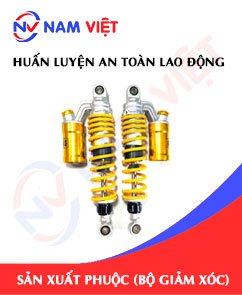
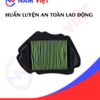
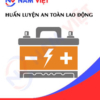




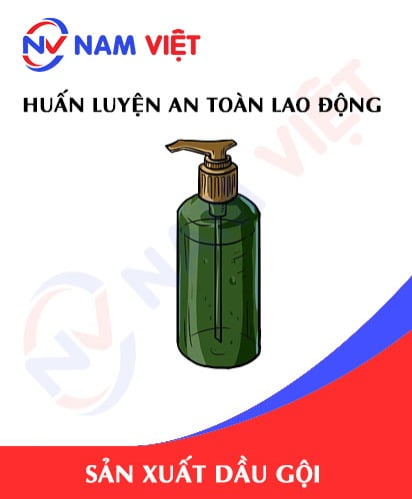
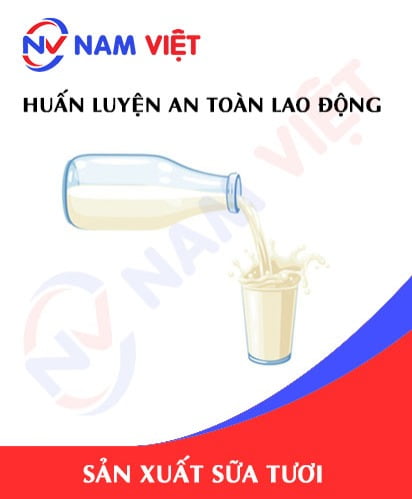


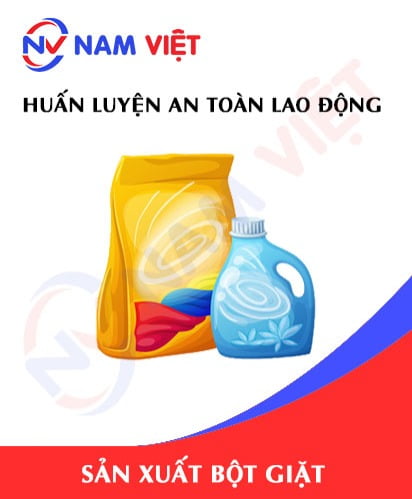
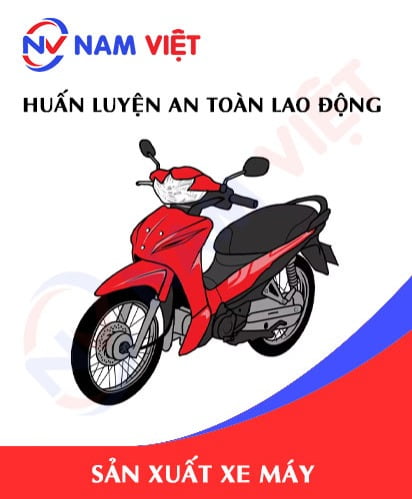

Review Occupational Safety Training for Shock Absorber Manufacturing
There are no reviews yet.